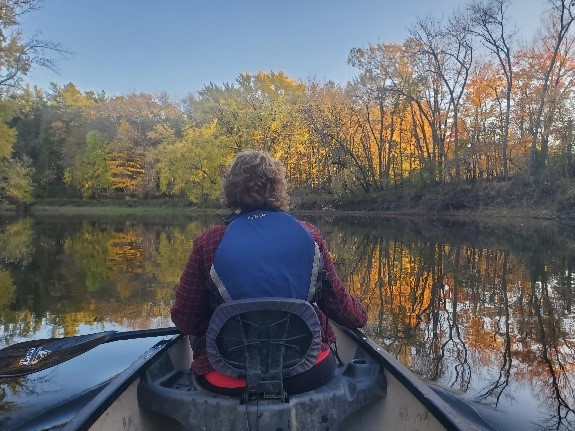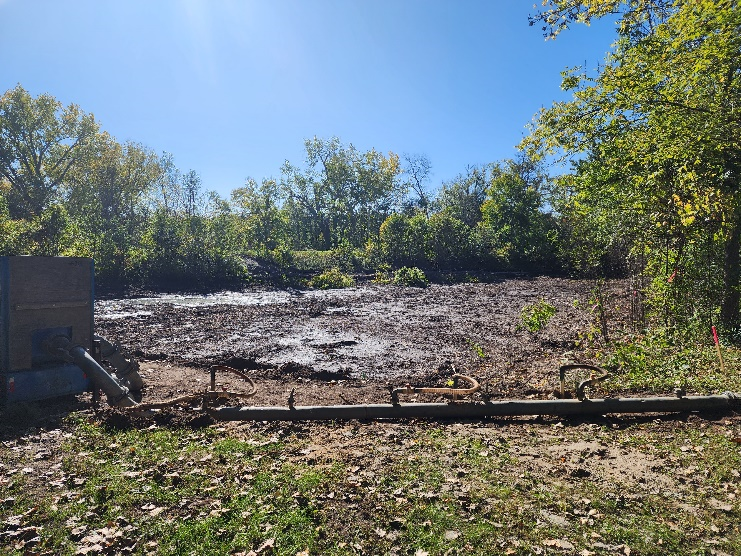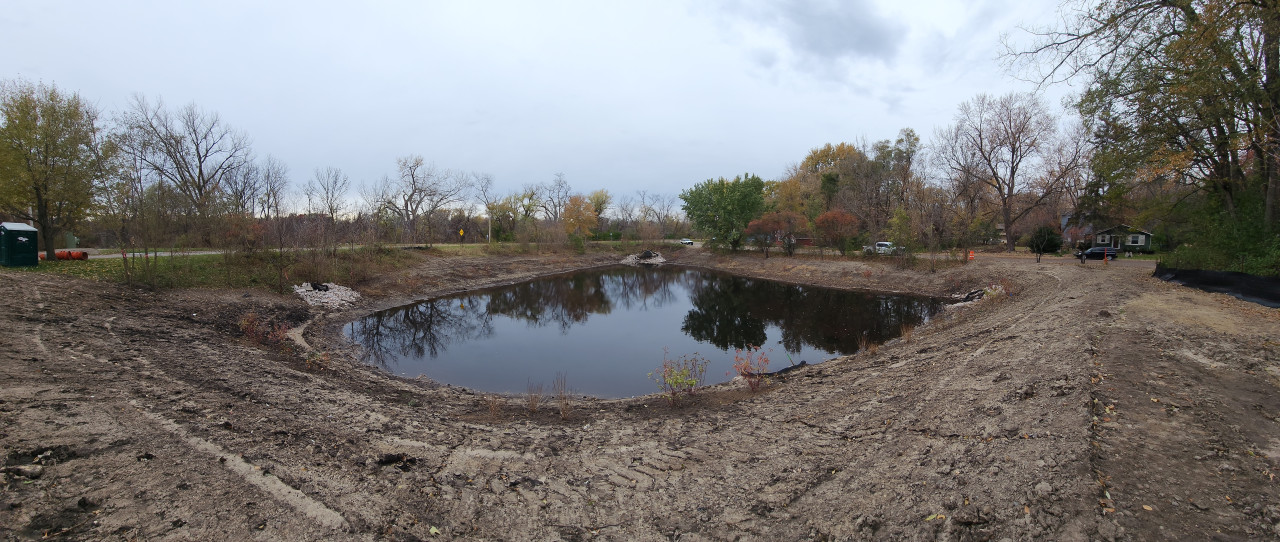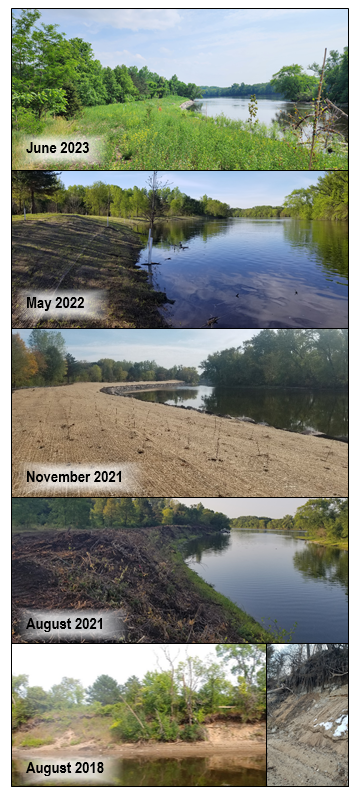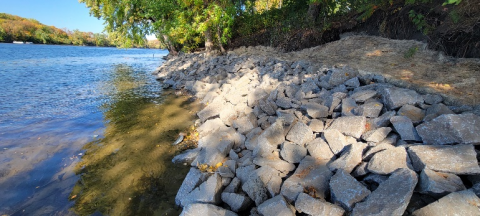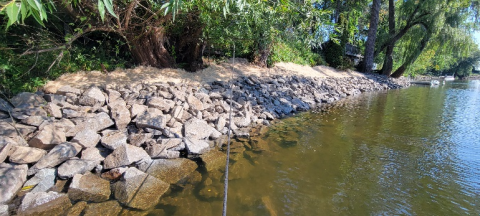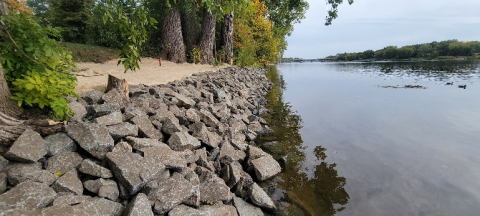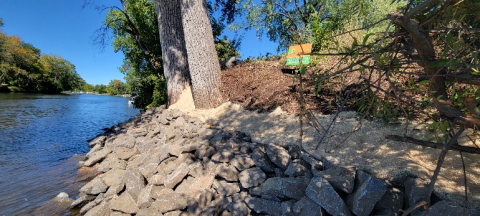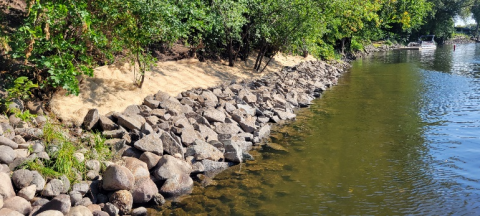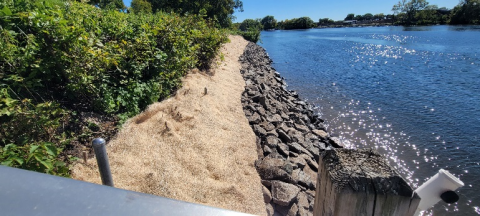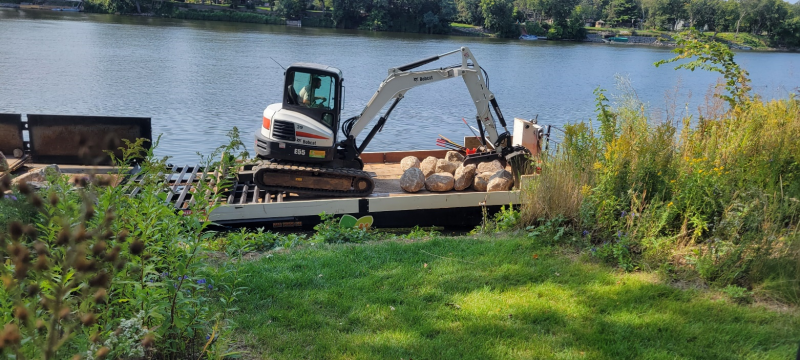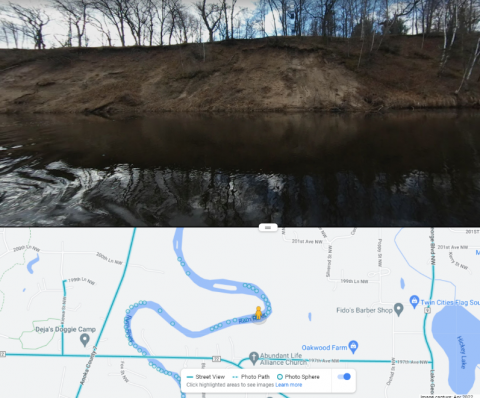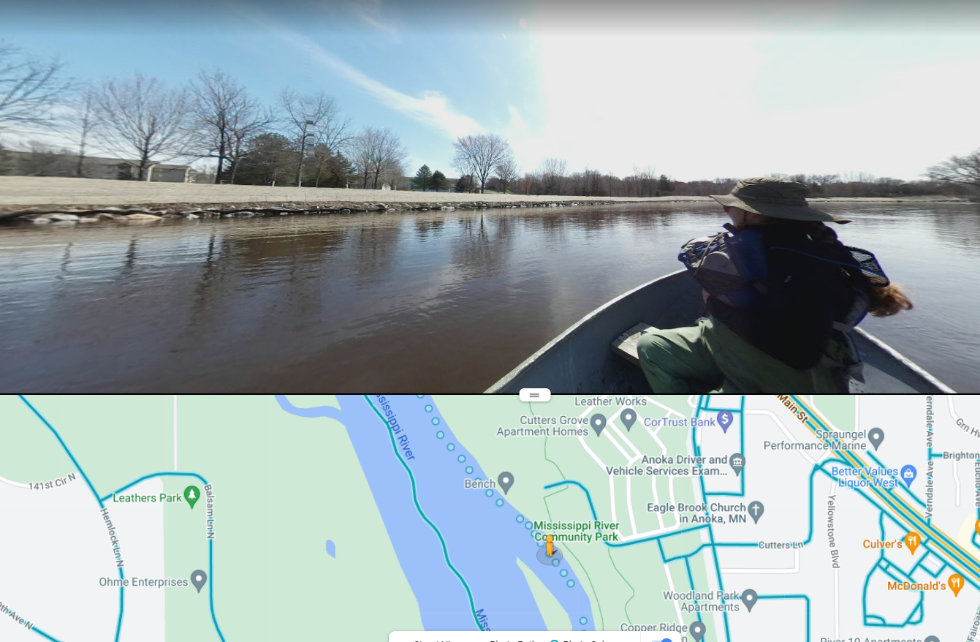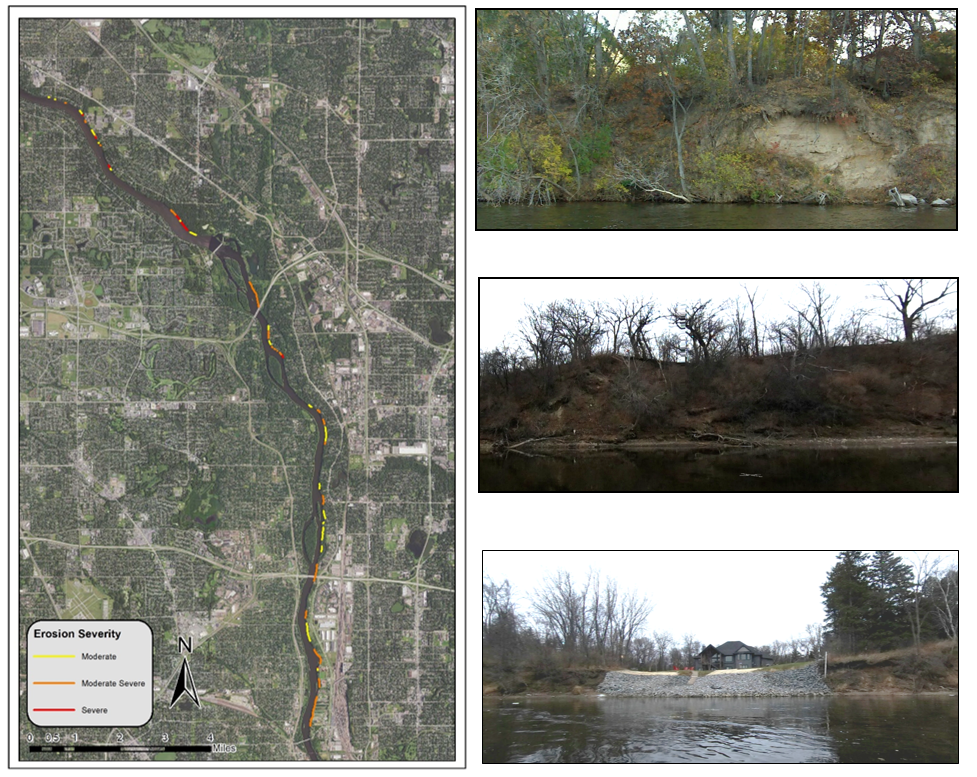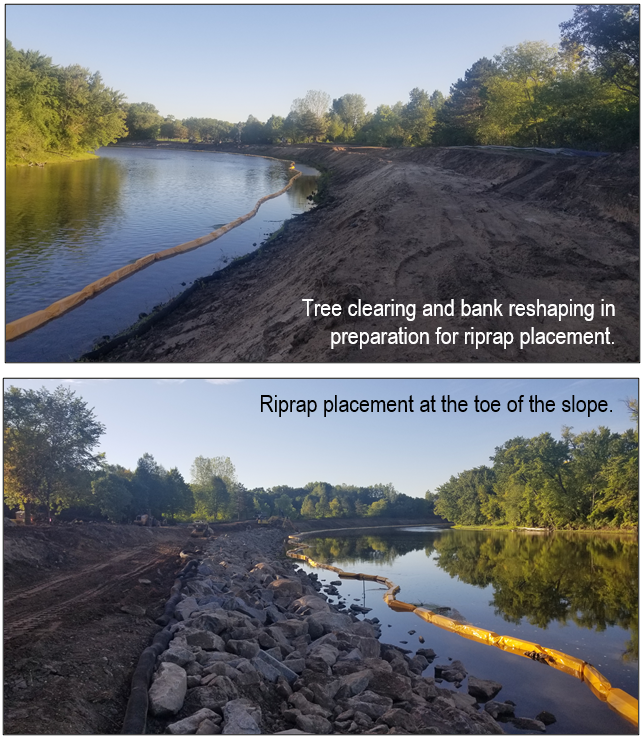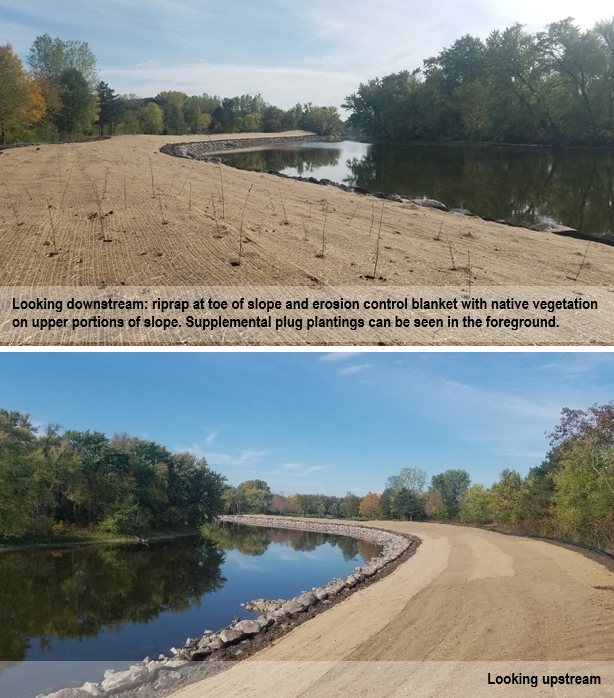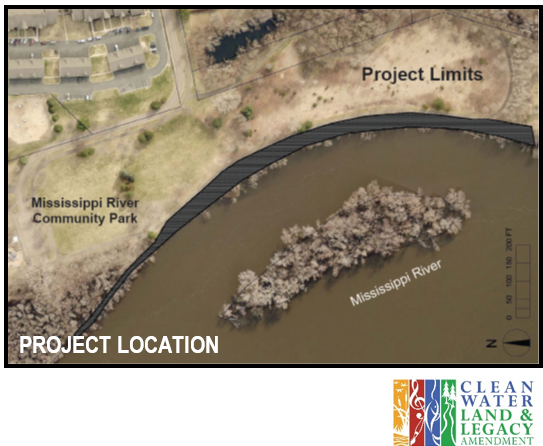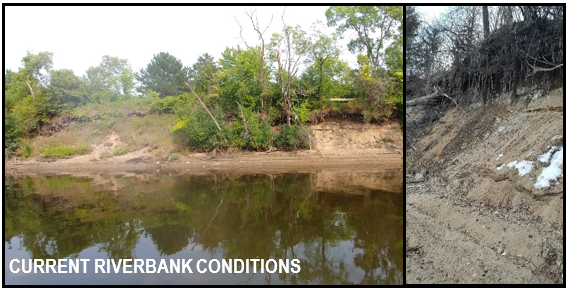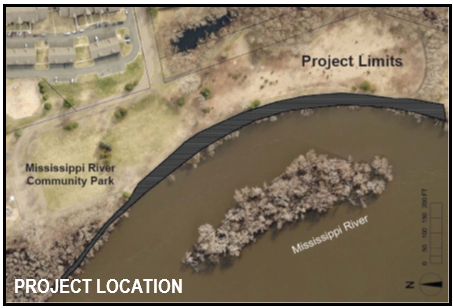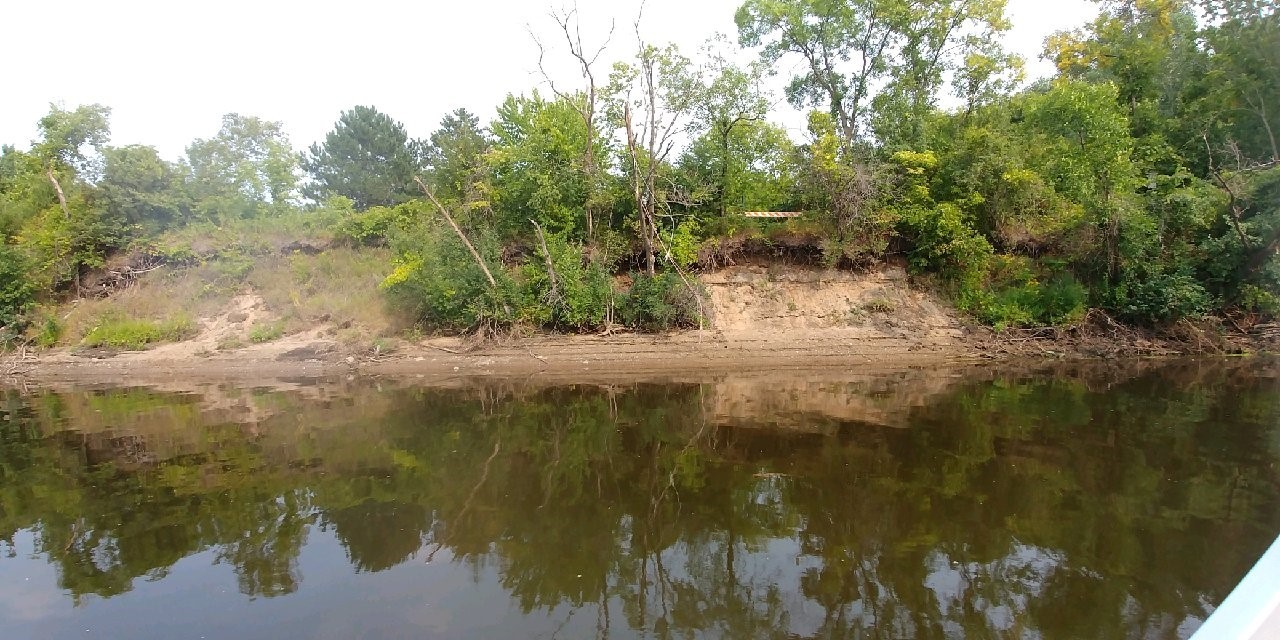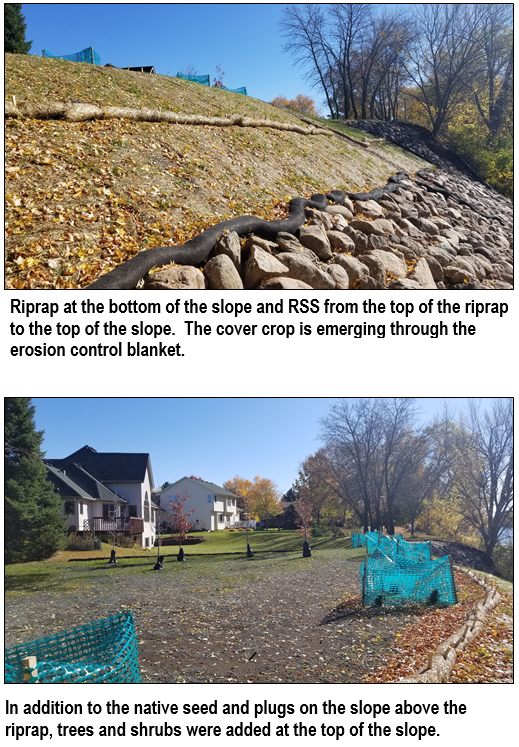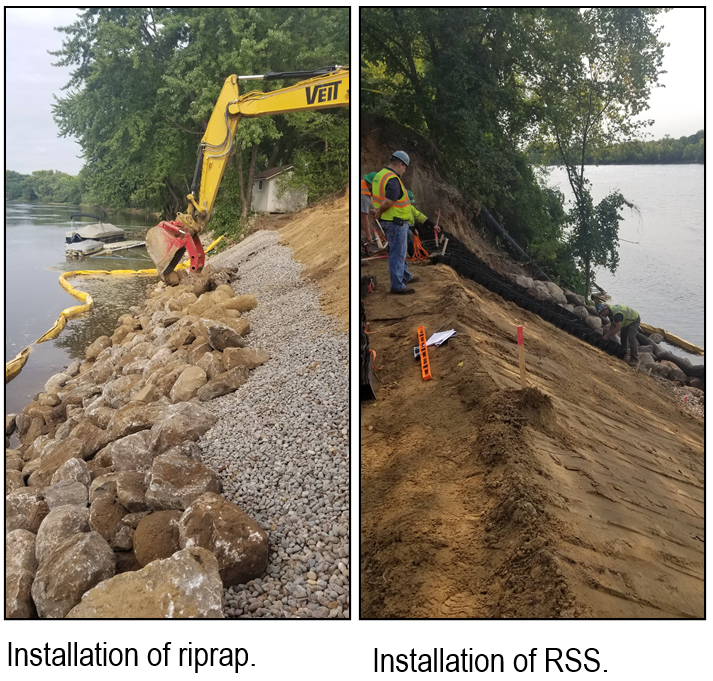ACD recently completed two stormwater retrofit analyses (SRAs) for the Mississippi and Rum Rivers. The reports identify and rank potential water quality improvement projects in areas not covered in previous SRAs. The reports will be available on ACD's website and provide a tool for natural resource managers when considering the implementation of projects to improve water quality in the Mississippi and Rum Rivers. A brief summary of each report is included below.
MISSISSIPPI REPORT
The 803-acre study area spanning the Cities of Anoka and Coon Rapids was divided into 21 catchments over two distinct areas west and east of the confluence with the Rum River (see map below). Each catchment includes a dedicated outfall to the Mississippi River. Nine catchments were identified upstream (west) of the Rum River (MW catchments), and 12 catchments were identified downstream (east) of the Rum River (ME catchments).
In summary, 110 projects were identified throughout the 21 catchments. Project types included bioretention (94, 86% of total), hydrodynamic devices (14, 13% of total), stormwater pond expansions (2, 2% of total), and an underground structure (1, 1% of total). Enhanced street cleaning opportunities were also analyzed.RUM REPORT
A 12,300-acre study area spanning the Cities of Anoka, Andover, and Ramsey was reviewed and narrowed to 20 catchments with a combined area of 1,477-acres to fit within the scope and available budget of the analysis (see map above). Each selected catchment has a defined outfall to the river. In summary, 61 projects were identified throughout the 20 catchments. Project types included bioretention (47, 80% of total) and hydrodynamic devices (12, 20% of total). The prevalence of existing stormwater ponds throughout most of the study area limited the opportunities for large, regional practices.
The prevalence of existing stormwater ponds throughout most of the study area limited the opportunities for large, regional practices. The analyses were funded with BWSR Watershed-based Implementation Funds. Learn more details about these SRA's by reading the full blog article or contact Mitch Haustein, Shoreline and Stormwater Specialist, at





